Tim Pilbeam travels to beautiful Argentina to hunt the elusive axis deer, but getting a clear shot at this wary quarry in the thick cover proves to be challenging to say the least!
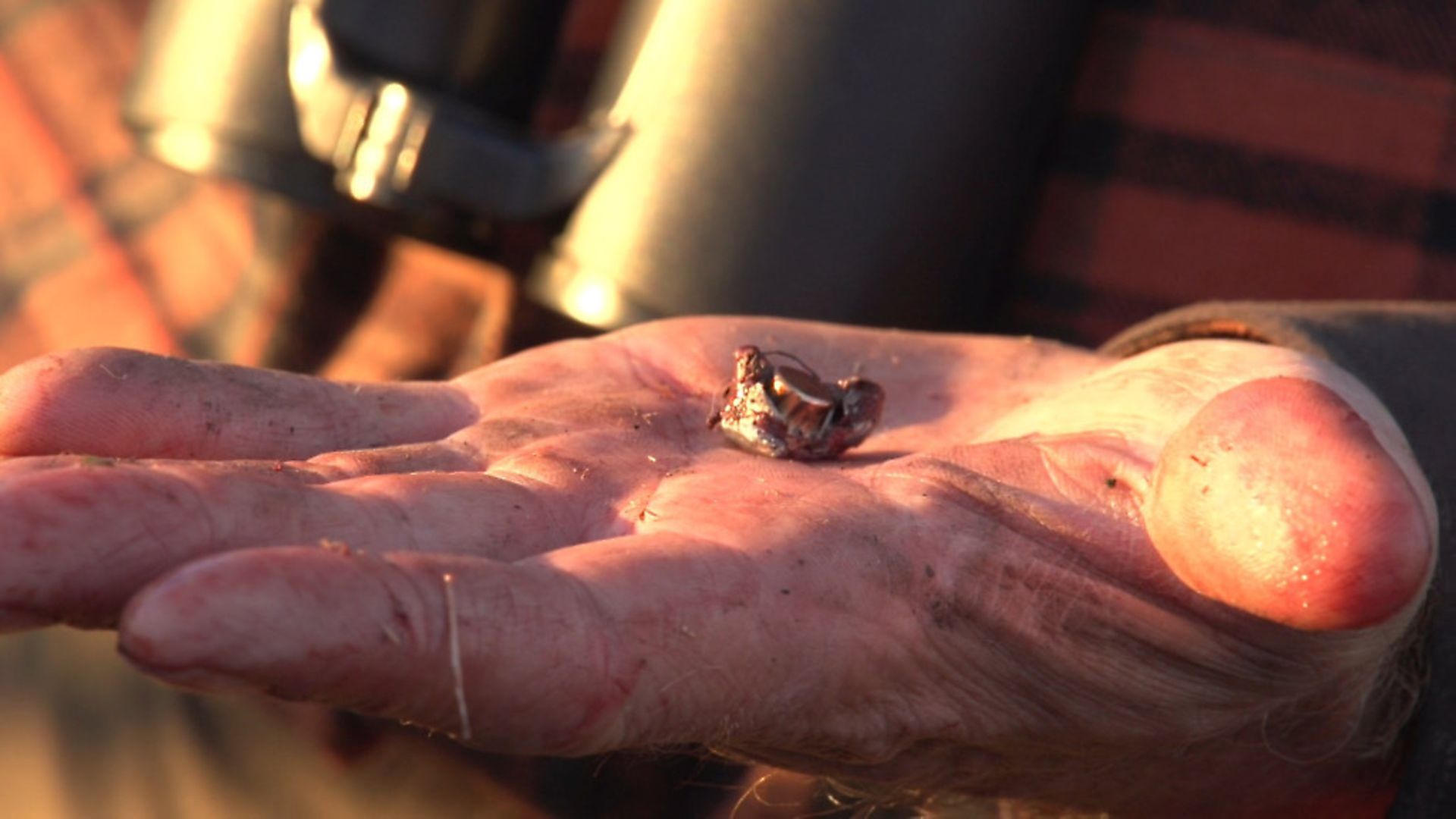 credit: Archant
credit: Archant
It had been raining all night and there were concerns that we wouldn’t be able to access the neighbouring farm for the next two days of hunting. After 15 minutes of driving we approached a bridge over a large river, and stopped. We couldn’t get any further.
Our driver, Carlos, pulled off the road and dropped down next to the water’s edge, and it was then that I saw two local guides grinning from ear to ear – and two canoes parked up on the sandy bank. Miguel and Huan are the owners of the property where we were hoping to stalk axis deer, and this was not the first time during this trip that friends and acquaintances of Carlos had come to help in times of need. We all discussed the change of plan…
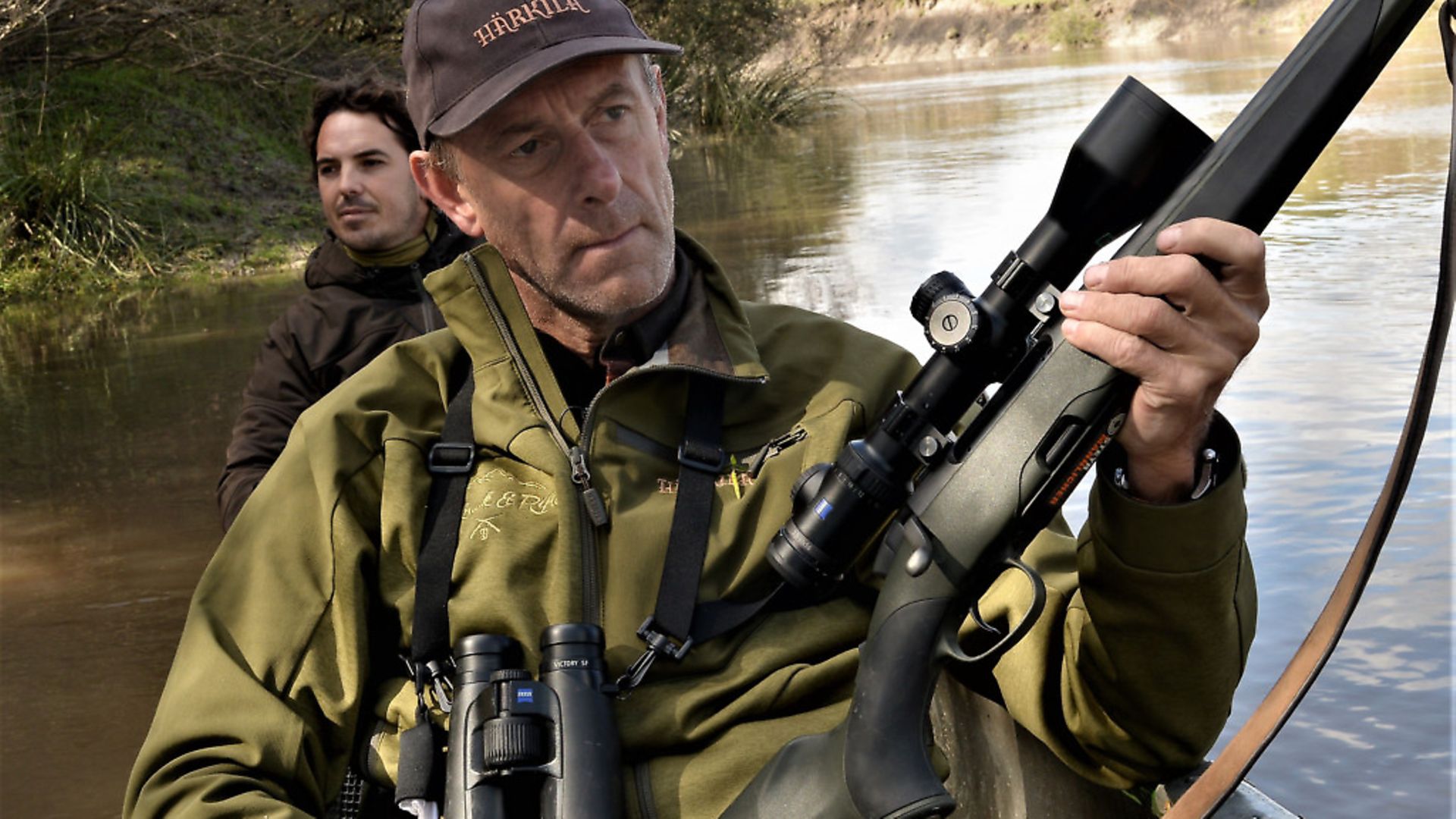 credit: Archant
credit: Archant
Just one of those days
It was agreed that Miguel should guide us to the most suitable landing point, allowing us to enter his property to start our hunt from the lowlands. Carlos took control of my canoe, while cameraman David jumped aboard with Miguel and we set off down the river that was some 50-70m. The recent rain had raised the water level by over 5m, and in some places the current meant that I also needed to paddle in order to stop the canoe from heading into displaced trees and vegetation floating in the water.
It was so peaceful. My rifle was loaded, ready for any unsuspecting pig or deer that may be eating the fresh grass that covered the steep river banks. I practiced holding the rifle in a stable position but soon decided that any shot over 50m would not be a good idea, thanks to the constant movement of the canoe. I wonder how good the cowboys and Indians were at this? Eagles and paraquettes were constantly flying over us, with the odd vulture seen high in the sky above.
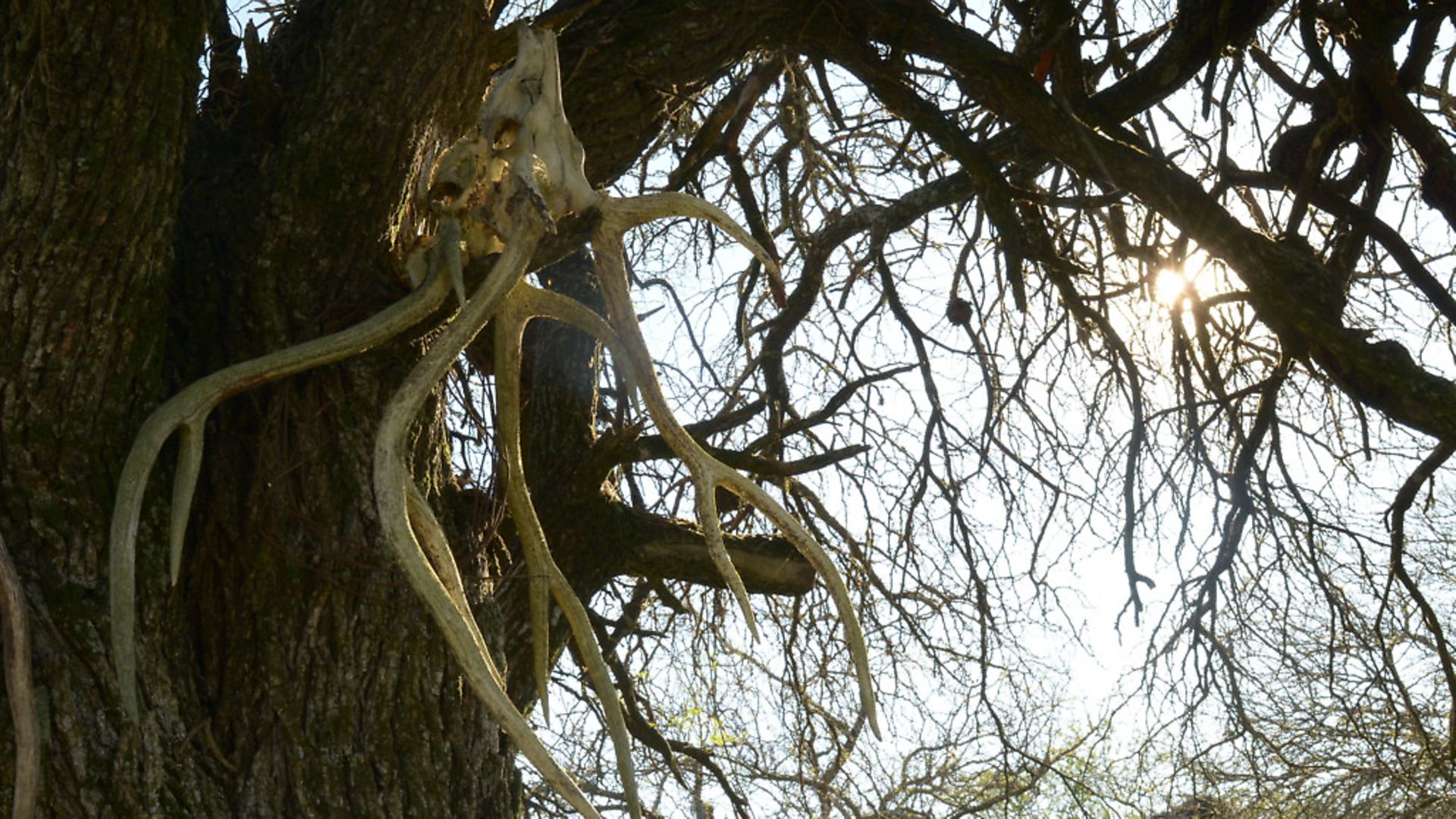 credit: Archant
credit: Archant
One thing was for sure – there was an abundance of capybara. Temporarily protected, as the local government were concerned about the floods over the past two years decimating their population, these animals reach the size of a rotund Labrador when fully mature, weighing up to 75kg, and they are the largest rodent in the world. Families of capybara lay on the riverbank basking in the early sun, but once they saw us all it took was a grunt from a lead male, and they all dived into the water. Over the next 6km we saw hundreds of them, with some swimming under our canoes as they tried to cross the river. It was slightly unsettling to see them below, peering at us from the water.
In true EMI fashion, David went ahead to find a high point to film me arriving. There I am posing, gun supported on my leg, muzzle pointing to the sky, gazing down the river and acting like the true white hunter in one of those ‘70s movies, when I receive some verbal abuse from Carlos as the current was too strong for him to steer the canoe on his own. The gun dropped to my side, replaced with a paddle, and we just made it to the sandy outcrop before the trees damaged the sides of the canoe.
Once the canoes were dragged up the steep bank and secured to a tree, we prepared ourselves for a long walk through the swamps and – hopefully – to the more open plains. My rifle was slid into the holder of my Harkila Kervo rucksack to free up both arms. Spare cameras were handed out to Carlos and Miguel, to help David clamber through the trees. The heavy rains destroyed any chances of us successfully stalking any deer, as the noise of all our boots wading through thick mud could be heard miles away, so we decided to crack on and head for the more open ground.
After an hour, the thick trees were behind us, and all we could see was tall grass and open savannah to our left, but we had one fundamental problem – in the distance, the tightly-grazed open areas looked perfect for deer, but the wind had turned and now was blowing from behind us. We had successfully winded the whole area, and there was four miles of walking before we could reach the high ground.
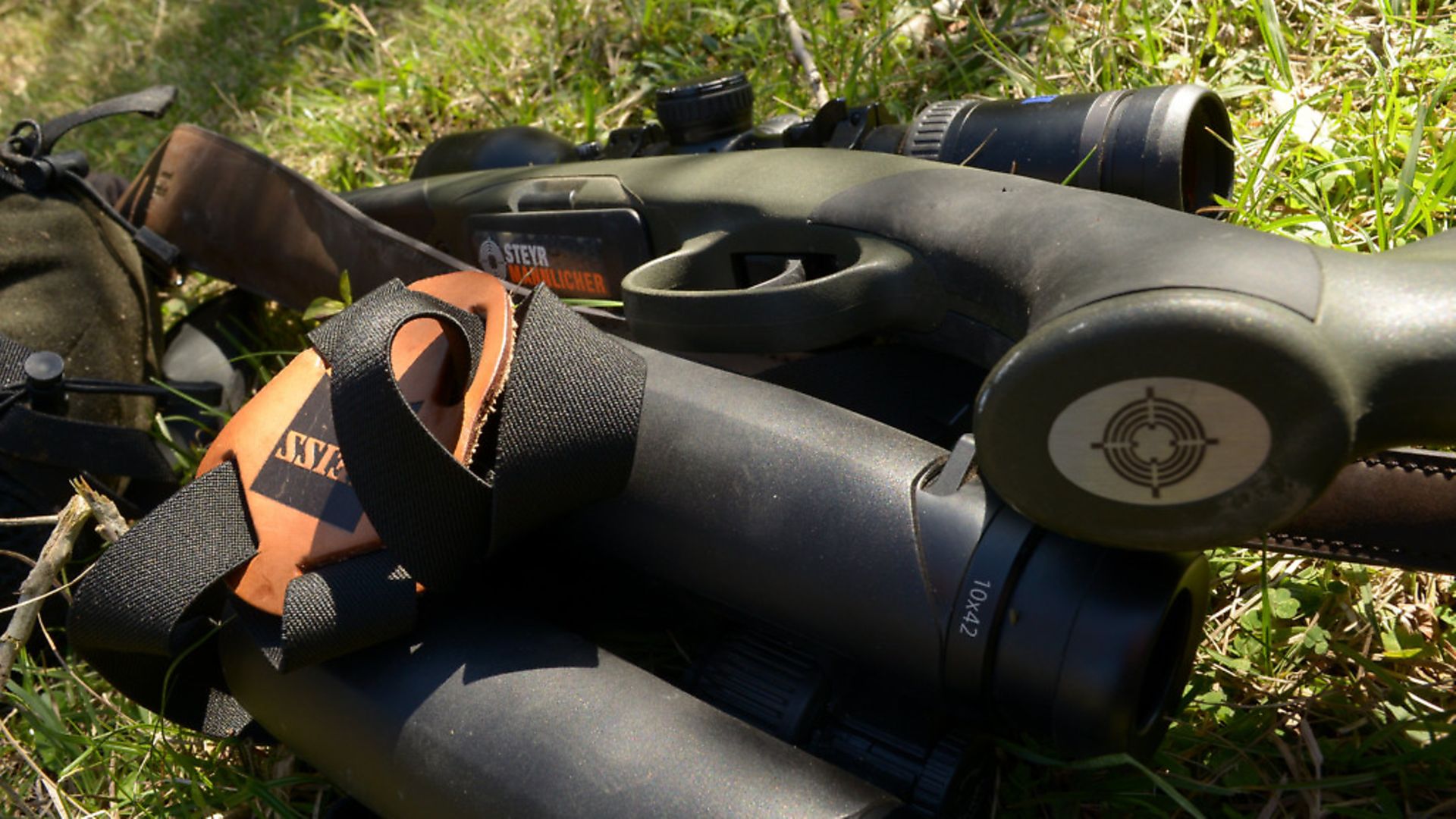 credit: Archant
credit: Archant
After stalking for an hour, we soon realised that the best thing to do was to bail out and head to the farm for lunch and a rethink. With layers of clothing removed and stashed in our rucksacks, we tabbed on for two hours before arriving at the farm. After a healthy lunch and siesta we headed out again, but it was just one of those days when everything was against us. Yet again the wind had turned 180 degrees, making any further hunting a waste of time on the other side of the property. By 6pm it was time to head back, and we had to walk another three miles on a muddy track before finding the main road where, thankfully, Juan greeted us and took us back to our base some five miles away. Despite the lack of success, the adventure in the canoe and images of the capybara and birds will remain with me for many years. As a life coach would say, the journey is, very often, more important than the result. Hmmm, I’m not too sure that a hunter wholly agrees with that!
The next day, the pressure was on as we needed to find these elusive axis deer – unsuccessful hunts do not make exciting films! A very early start ensured we were ready for another day’s stalk before the sun rose. This time a local guide, Pako, joined us and we headed back down to the wetlands that were covered in tall grass measuring over 6ft. Another memory that will stay with me for years is walking through this grass, sodden from the heavy dew, with the early sun rising behind us and the low yellow light streaming through the undergrowth.
Pako knew exactly where to go and, once again, wellington boots were our saviours as this plateau was still flooded from the recent heavy rains. On several occasions, Pako had to backtrack due to the deep water, and this was to be our eventual downfall. Our guide was trying to reach a secluded area of fresh grass and low trees where the large males normally congregate. By the time we arrived the wind was completely wrong, and we saw three monster stags running away from us in the far distance. While it was great to quickly see them, we knew they would clear the whole valley. We persevered for another two hours but it was all in vain. We had drawn another blank, so it was back to the farm again to recharge the batteries.
I must admit I enjoyed the Argentinian way of life. Up and about early and after lunch it is siesta time on the veranda hammocks until about three, before heading out again into a different part of this wild open expanse of wilderness.
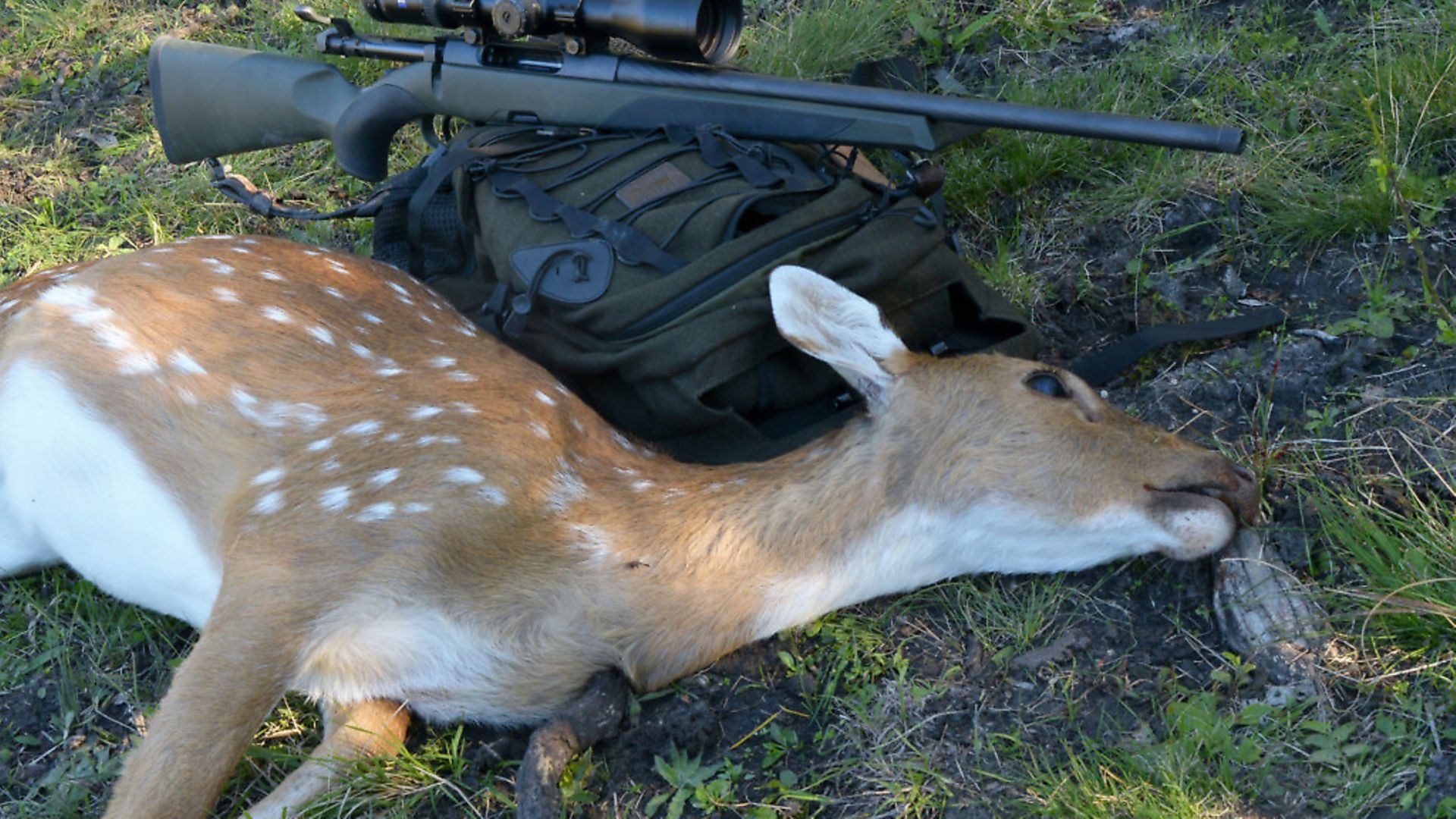 credit: Archant
credit: Archant
No matter how many times we go hunting, schoolboy errors tend to catch the most experienced of us out. We had to walk a couple of miles to a favoured hunting area so we put our heads down to crack on, and what happened? Within five minutes a young female ran out in front of us, no more than 50m away. While I was more or less ready, David was not as he was still adjusting his kit for the long haul. My Steyr Mannlicher rifle was mounted in my shoulder and ready to fire but, without it being filmed, it is not worth shooting.
The beast watched us for what seemed like several minutes, while Pako whistled to it, but with one hop it jumped over the fence and bounded off into the distance. It went very quiet. Our guide shook his head and carried on, no doubt thinking that we were a right bunch of amateurs.
We wandered on, but now the bushes and undergrowth were far too thin for stalking. We have to bear in mind we are hunting axis deer that were introduced from southern India and Napal, where tigers are a natural predator – it is in their nature to be very wary. They are so timid, very intelligent, and able to hide in the bushes, cleverly camouflaged by the series of white spots along the sides of their bodies. They are also called ‘spotted deer’ or ‘chital’, with males reaching 38” at the shoulder and females 28”, weighing up to 80 and 50kg respectively. They are non-native, and so are treated as exotic game with no restrictions on seasons and hunting.
They have no real predators and, as they are larger and more dominant than the native species, their numbers have increased alarmingly over the years. They also suffer from the so-named ‘sad disease’ which makes them docile and lethargic and eventually kills them, and this can be passed onto the other native species. The stags can grow large antlers to 40”, making great trophies, but as we are hunting in their winter (August and September) most of their heads will be small and more likely to be in velvet.
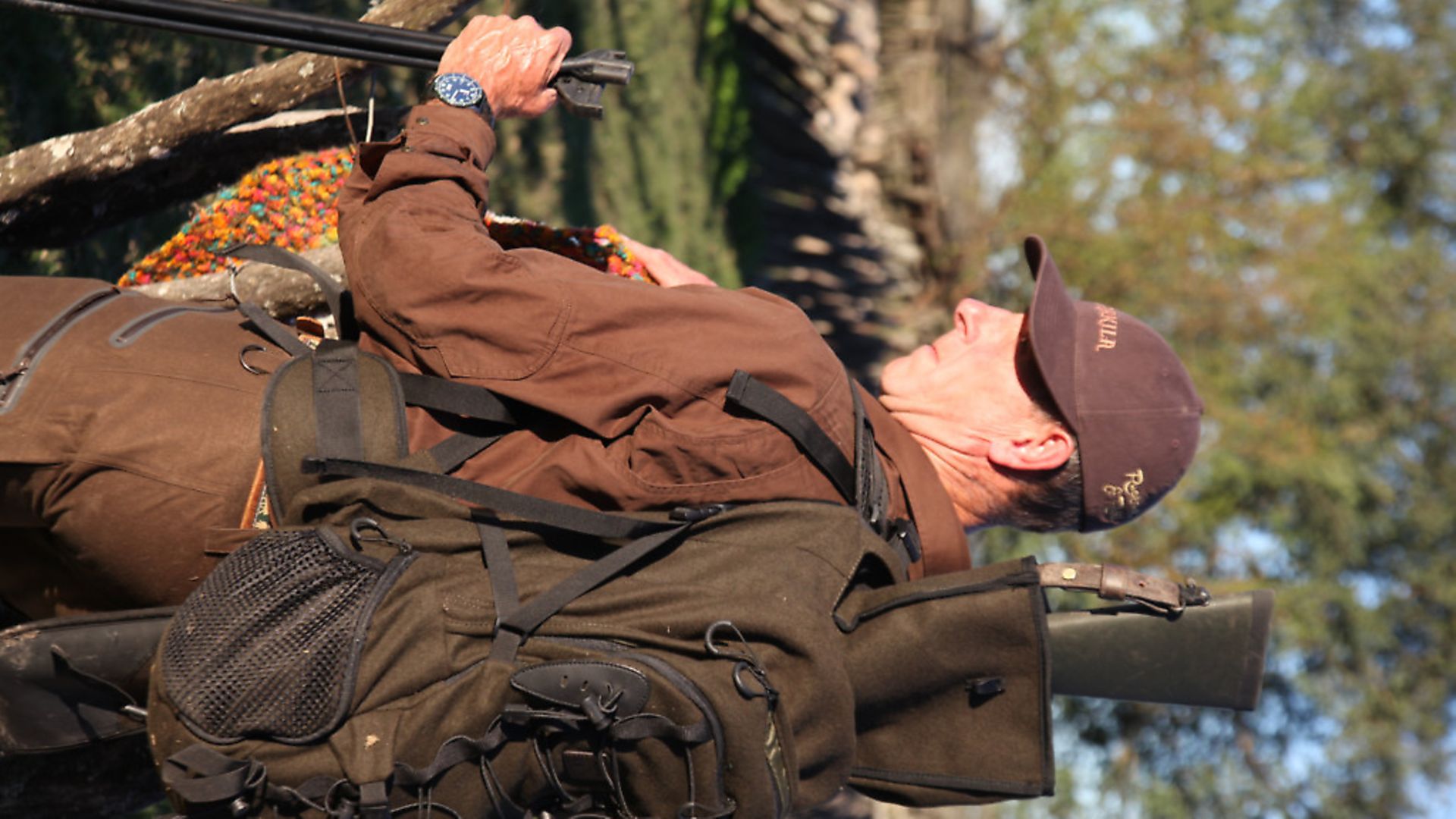 credit: Archant
credit: Archant
We heard a recognisable squeak to our left. Pako took us forward very slowly for another 100m and sat down next to a rough track. He explained to Carlos that 100m in front of us was a deer run or passing point into the next property, and we should wait to see if they appeared. Within 15 minutes a very young female wandered out very nervously to check if it was all clear. She looked up in our direction and Pako slowly signalled with his thumb to take a shot.
I was sitting down with legs crossed, offering a stable shooting platform, with the rifle resting on my hand, supported by my left knee. I was aware that Pako was 1m in front of me, slightly to my left, and so I nudged him to move further away, or at least cover his ears up. He declined, concentrating on the quarry, although I was a bit worried my 20” barrel in .30-06 might burst his eardums!
I whispered to David to make sure he had enough coverage of the animal and that he was ready for the shot. The youngster was facing me directly, and Carlos whispered to me to take the shot quickly, before it alarmed the rest of the deer that were no doubt waiting in the undergrowth. Later, I was informed that they’d probably sent the youngest out first to check if there was any danger to the rest!
I gently squeezed the trigger of the Steyr Mannlicher SM12 SX Mountain rifle, knowing that the 150g Remington bullet at 80m would probably make a mess of the whole rear end of the beast, and a high heart and lung shot dropped the deer instantly. Pako’s head must have been pounding from the muzzle blast, but he turned and smiled, knowing that his knowledge and instinct had paid dividends. We had our first axis deer. Pako asked if we were going to carry the small deer but, as there was another three hours of daylight we decided to quickly butcher it, before hanging the meat in a cloth saddle bag on a fence post to pick up on our return.
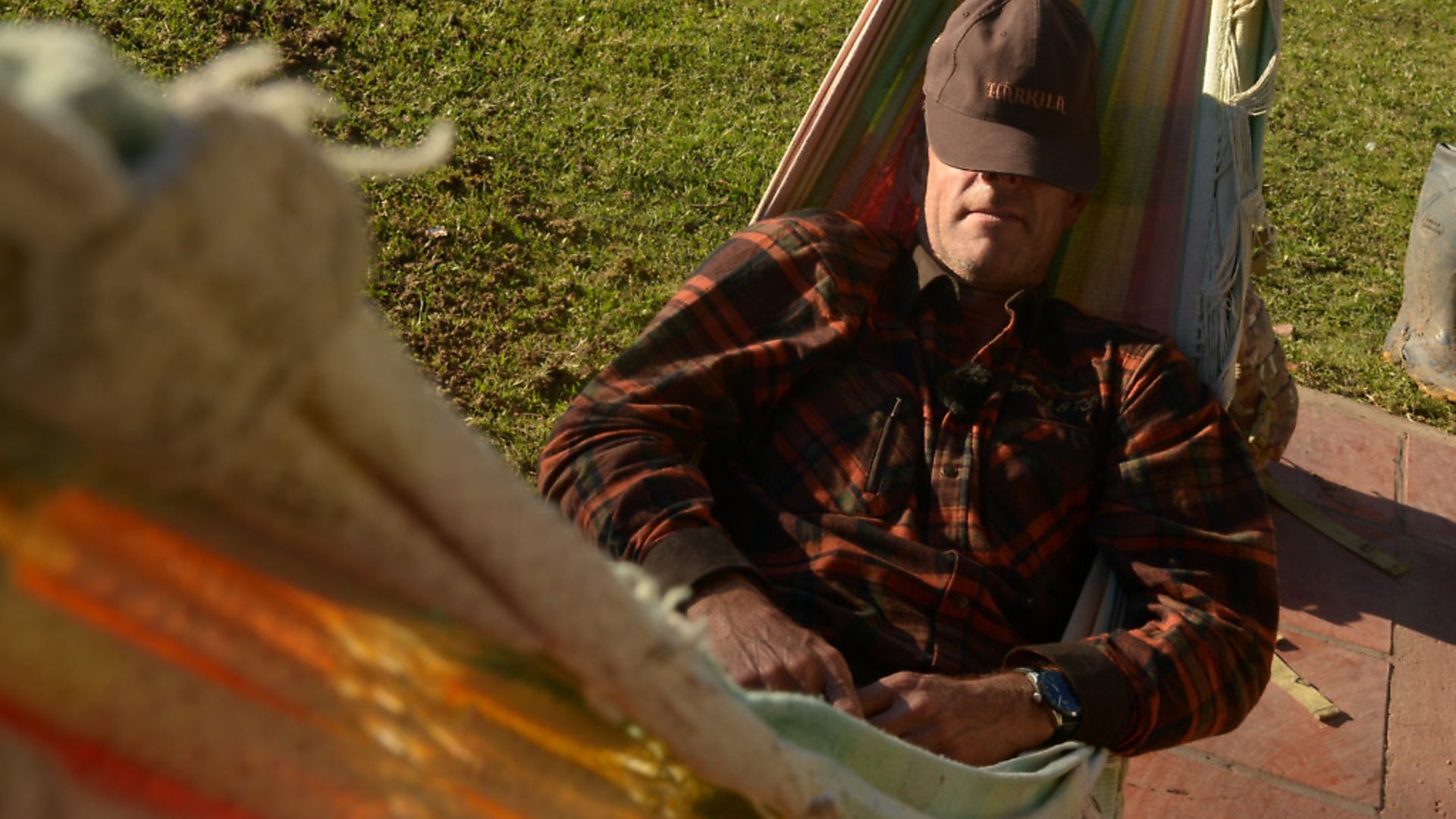 credit: Archant
credit: Archant
stealth of a lion
We headed south into even thicker bushland, happy with the knowledge that we had at least one beast for the film, even though it was a very young one. Once again, we could hear the calls of the deer and saw mature females running away from us in the distance.
Our guide started muttering to himself, obviously not happy with the noise the three of us were making. We walked purposefully for another hour, and then Pako stopped in his tracks. He called Carlos forward for a quick discussion, and then we all moved to our left to sit down beneath a bush for a good half hour.
We were instructed to remove our rucksacks and any unnecessary gear, but what followed was really quite amusing. Pako simulated the movement of a lion or tiger stalking its quarry, with both feet and hands moving in slow motion, intermittently stopping with his eyes fixed on an imaginary animal. He was trying to explain that if we saw a deer it would be very close and so we must only move when it is eating! We chuckled, but I could see our guide was getting a little impatient as this was our last chance before the light dropped, and I am sure his pride or reputation would be at stake if we were unsuccessful.
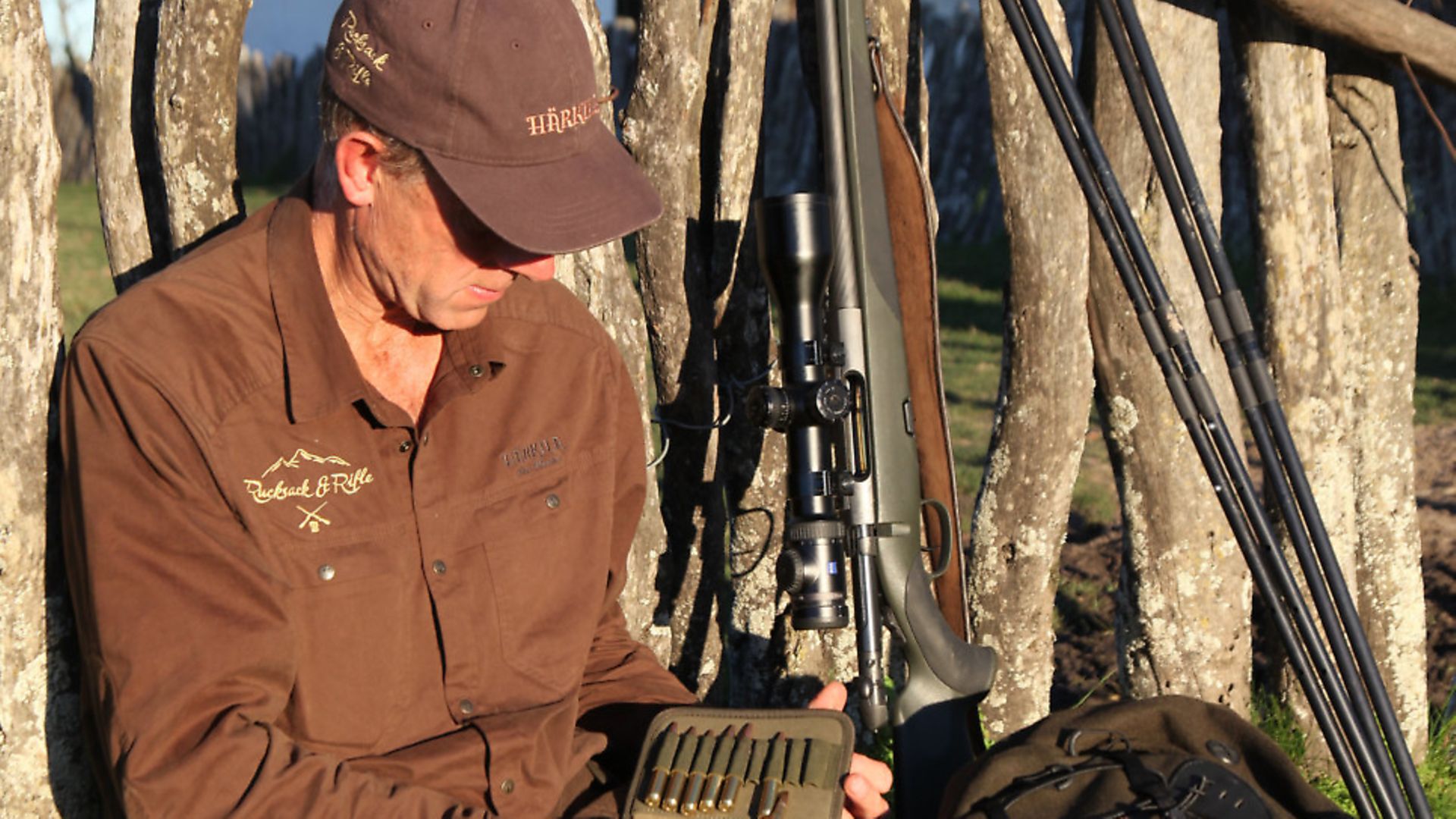 credit: Archant
credit: Archant
We walked slowly across an opening and headed straight into the thick bushes. Pako pointed ahead to make sure that we were all aware that there were animals in there. In other words – concentrate and be quiet!
Another 50 yards on, Pako stopped. He beckoned me forward and pointed into the thick wall of thorn that stood in front of me. I stared for two minutes but I could not see anything. I gently lifted my binoculars and still nothing was obvious to me, until I spotted a slight movement. There it was, no more than 60m away, but it was the white spots of the axis that once again made them look invisible. The sticks were already positioned in front of me so I slowly lifted the rifle and waited a few seconds to make sure the camera was also ready for the shot.
I was faced with a dilemma. The deer may have been only 70 yards away, but it was standing behind a curtain of thorns and bush growth – not ideal by any means. Should I take a shot, accepting that there was a good chance the bullet could be deflected? My decision to take the shot was made based on the fact that the animal was within a foot of these bushes, not forgetting that a .30–06 Core Lokt bullet, designed partially for deeper penetration on medium to large animals, would take a lot of deflecting at that range.
By this time, the animal was starting to become agitated, instinctively knowing that danger was nearby. Once again, a pull of the Steyr Mannlicher’s gentle trigger resulted in the impressive boom from the short barrel, but all I could see was a glimpse of the deer moving off to our right. Had I missed it? Was it wounded? I couldn’t see any shot reaction, as it was standing with its chest to me. Pako stood still for five minutes, listening to the sounds of many hooves and breaking twigs as the animals scampered away. We pushed through the thorns to where the deer was standing but there was no blood trail to our right.
After 10 minutes of searching I heard a whistle and headed back to where we started, only to see Pako smiling and pointing at the animal on the ground some 10m from the initial shot position. It was a female of about two years of age. After skinning and butchering the deer using the customary machete, we found the bullet lodged under the skin, nicely mushroomed, causing the maximum amount of hydrostatic shock. It had entered the front of the chest and passed through the heart and lungs before stopping at the rear of the upper body. The 150g Remington Core Lokt had performed its job perfectly!
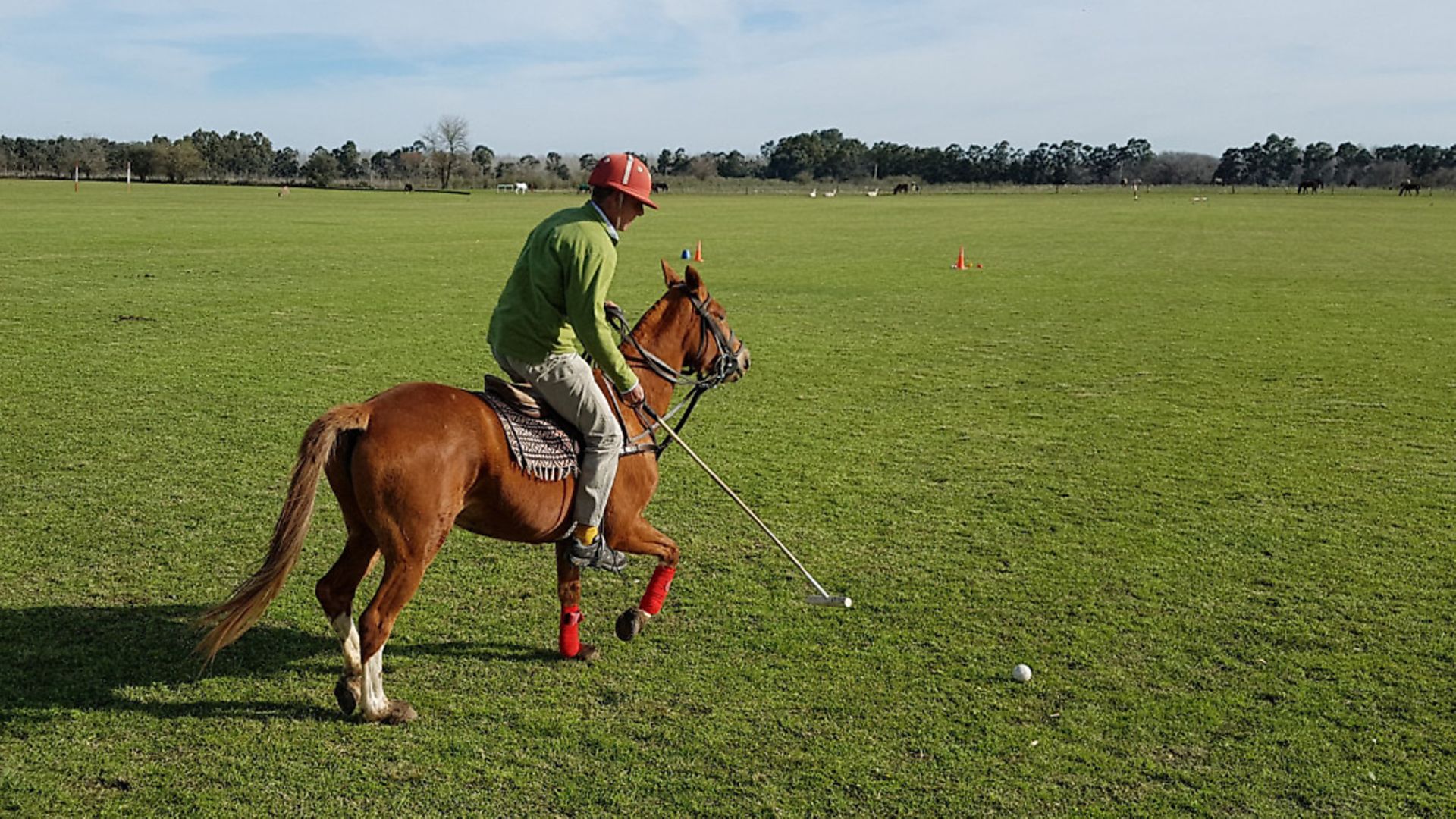 credit: Archant
credit: Archant
The legs were removed above the hocks, the back straps sliced off the rib cage, and the legs skilfully removed from the skeleton. It was interesting to see how our guide was prepared for extracting the meat from this unforgiving terrain. He wore a thick cotton gilet, very similar to a clay pigeon shooting vest, with a large poacher’s pocket to the rear. Within this large pocket he also had a saddle bag, which he used to store the meat from the first deer, and the larger beast was packed carefully into this gilet.
With two beasts hunted after a tough 14 hours of stalking, we were more than happy with our endeavours. One thing is for sure, the axis deer are very tricky animals to stalk.
There’s no doubt that they are easier to approach in the more sparsely covered land, but they seemed to be much more alert than our fallow deer in the UK. We were certainly indebted to the skills of Pako, as there is no way we could have stalked in this thick bush, let alone find them. He instinctively knew their movements and where they were, totally relying on their gentle squeaks.
To finish, I must talk about Argentina. It is a beautiful country to visit. Once you are in the country away from the large towns you will find the people very accommodating and friendly, always eager to help you out.
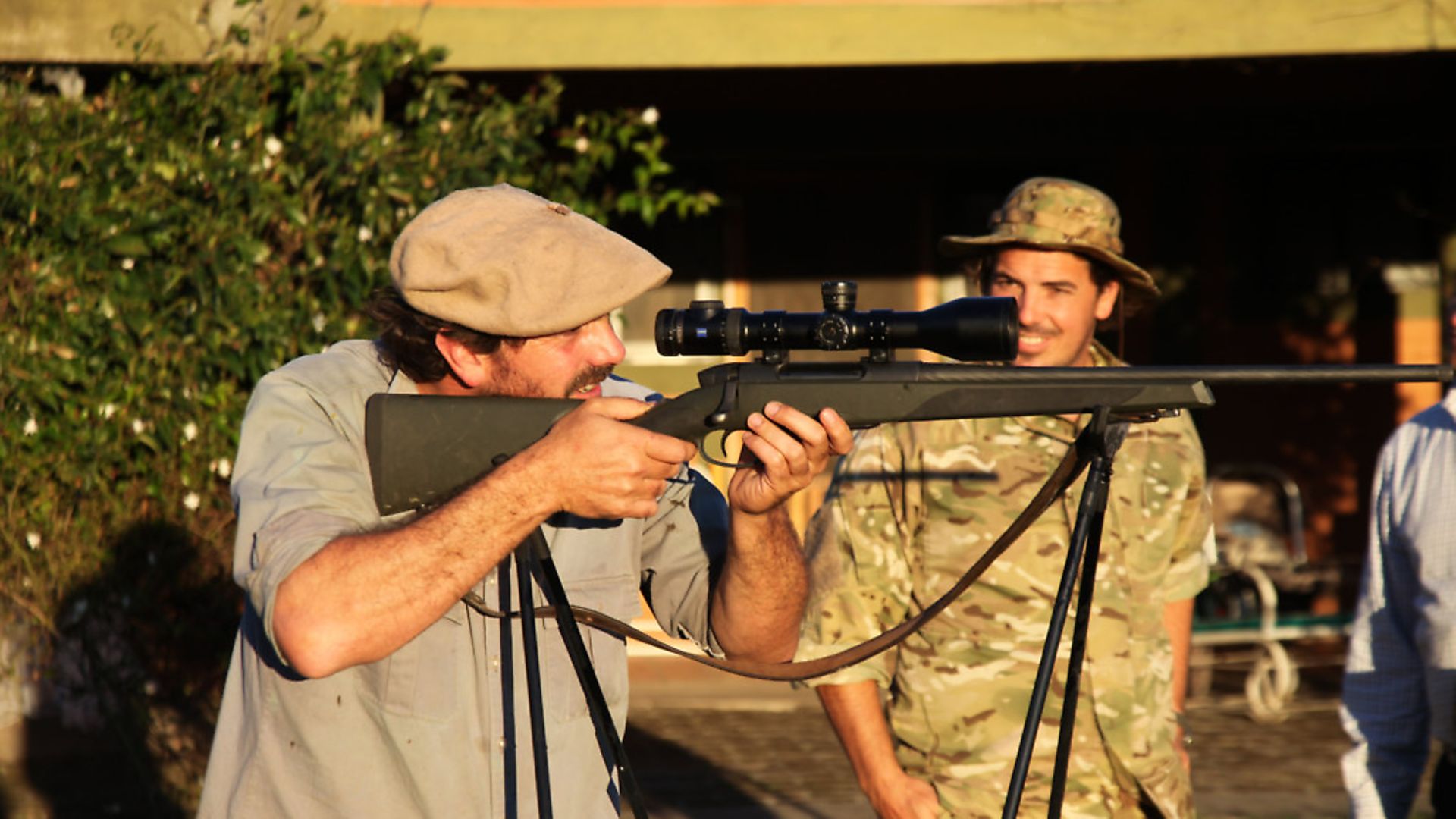 credit: Archant
credit: Archant
To the north of Buenos Aires, the wetlands packed with wildlife and the tropical forests of the Foz do Iguacu on the Brazilian border are popular tourist attractions, and to the south, Patagonia, the glaciers and mountains near the Chilean border are stunning.
My trip lasted two weeks, in which I hunted for the first week and then travelled around the areas north of the capital for another five days, finishing in the capital for a further two days.
In Buenos Aires, we visited many different areas of the city, sampled many steakhouses, attended a typical Tango dance evening and, best of all, spent an afternoon playing polo with Fernando, with no less than an international player as our coach!
I will be returning to Argentina within the next six months to further hunt red and axis deer, not forgetting hunting wild boar again on horseback, and also to explore Patagonia. Argentina is a huge country, so if you are planning a visit, be mindful that you need to allow a huge amount of time to travel about, with well-earned rests.
KIT
STEYR MANNLICHER - SM 12 SX in 30-06 Mountain
Weight - Approx. 7.7lbs (3.5Kg)
Barrel Length - 20”
Stock - Green Synthetic with Polymer Inlays and Aluminium bedding block
Over Length - 41”
Calibres - .222 Rem., to 9,3x62
Magazine capacity - 4 + 1
RRP - £1620.00
Importer - Sportsman Gun Centre
ZEISS - Victory V8
Models - 2.8x20x56, 1.8x-14x50
Tube Diameter - 36mm
Weight - Approx. 830g
Length - 14”
Light Transmission - 92%
Reticule - No 6
Illumination - Auto off, intensity adjustable
Focal plane - 2nd
Adjustment - 210cm (1cm clicks)
Eye Relief - 3.9”
SRRP - From £2,200 (ASV long range extra)
Importers - Zeiss Uk etc etc